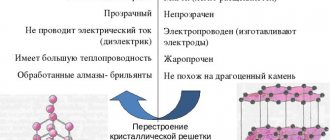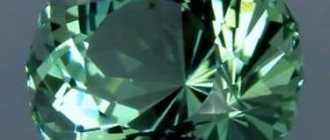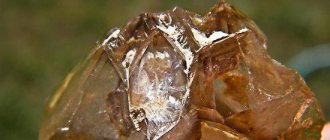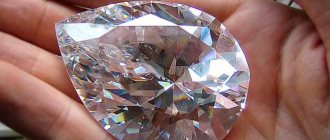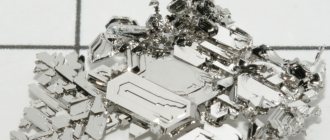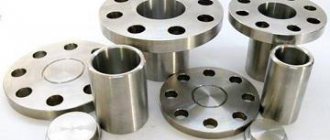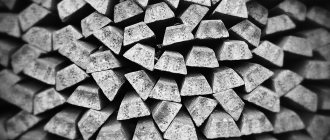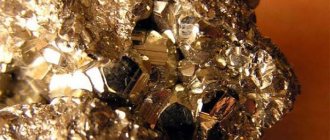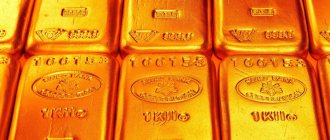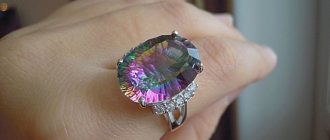Nitric acid is a strong monoprotic acid with a pH of about 3.01.
It is a "sticky" molecule that is easily absorbed into a surface, especially if there is water on the surface. Physically, pure nitric acid is a colorless liquid, but older samples often take on a yellowish tint due to decomposition into nitrogen oxides and water. The chemical formula of nitric acid is HNO3 and is also known as aqua fortis, which is Latin for “Strong Water.”
This is a very corrosive and toxic substance that can cause serious skin damage if used without precautions. The acid reacts with oxides, hydroxides and metals such as silver, copper and iron to form nitrate salts.
Typically, nitric acid available in stores is a 68 percent aqueous solution. When its concentration (in water) exceeds 86 percent, it is called fuming nitric acid. It is stored in a tightly closed container in a dry, cool and well-ventilated area.
Below we'll look at how this acid is produced, what it looks like on a molecular scale, what its chemical and physical properties are, and where it is primarily used.
Nitric acid HNO3 properties
Molar mass: 63.012 g/mol Appearance: Colorless or fuming yellow-red liquid Odor: unpleasantly bitter or pungent, suffocating
Conjugate base: Nitrate Acidity index (pKa): -1.4
Melting point: 231 K or -42 °C. Boiling point: 356 K or 83 °C (pure acid). Density: 1.51 g/cm3 (pure acid); 1.41 g/cm3 (68% aqueous solution)
Structure
HNO3 has one nitrogen atom (blue), one hydrogen atom (white), and three oxygen atoms (red). The nitrogen atom is bonded to all three oxygen atoms and carries a +1 charge. One oxygen atom carries a -1 charge, one is bonded to hydrogen, and the other forms a double bond to nitrogen.
Since oxygen has a greater tendency to attract shared electrons than nitrogen, it carries a negative charge, while the nitrogen atom carries a positive charge.
Lewis structure
To draw the Lewis structure of nitric acid, we need to count the total number of valence electrons in the HNO3 molecule.
- Valence electron in one nitrogen atom = 5
- Valence electron in one hydrogen atom = 1
- Valence electron in three oxygen atoms = 18 (6*3)
This gives us the total number of valence electrons (5 + 1 + 18) in one HNO3 molecule. Since nitrogen has more valence electrons than oxygen, we can place the nitrogen atom in the center of the structure.
The next step is to form a bond and label the lone pair on the atoms. Then comes the charge of each atom: the nitrogen atom will receive a charge of +2, and the two oxygen atoms will receive a charge of -1.
Finally, we need to minimize the charges on the atoms to make the structure stable. This can be done by converting a lone pair on one oxygen atom into a bond. The final structure consists of two single bonds between a nitrogen atom and two oxygen atoms, and a double bond between a nitrogen atom and the remaining oxygen atom.
There are two correct ways to draw the Lewis structure of HNO3. Thus, it has two main forms of resonance. The double-headed arrow in the image above indicates that there is more than one way to draw the structure of nitric acid.
How is it produced?
Two methods are used to produce HNO3. The first uses oxidation, condensation and absorption to synthesize weak HNO3 in concentrations ranging from 30 to 70 percent. The second method produces strong HNO3 (90 percent concentration) from weak HNO3 by combining the processes of dehydration, bleaching, condensation and absorption.
Production of weak nitric acid
Most nitric acid is formed as a result of high-temperature catalytic oxidation of ammonia. This is called the Ostwald process. It consists of three stages:
1) Ammonia oxidation
4 NH 3 + 5 O 2 → 4 NO + 6 H 2 O
A mixture of ammonia and air (1:9) is oxidized to a high temperature (750-800 ℃) when passing through the catalytic converter. The catalyst is usually made of 90% platinum and 10% rhodium mesh. This (exothermic) reaction produces nitrogen oxide and water in the form of steam.
2) Nitric oxide oxidation
2 NO + O2 → 2 NO2
The nitric oxide produced in the previous reaction is oxidized: it reacts non-catalytically with residual oxygen to form nitrogen dioxide. It is a slow, uniform reaction that is highly dependent on pressure and temperature. At high pressure and low temperatures, this reaction produces a maximum amount of nitrogen dioxide in a very short time.
3) Absorption
3 NO2 + H2O → 2 HNO3 + NO
In the final reaction, nitric oxide is absorbed by water. This produces the desired product (nitric acid in dilute form) along with nitric oxide. The concentration of HNO 3 depends on pressure, temperature, the number of absorption stages, as well as on the concentration of nitrogen oxides entering the absorber.
Tools and reagents for practical preparation of the substance
To carry out the reaction you will need:
- concentrated H2SO4 (>95%) - 50 ml;
- ammonium nitrate, potassium, sodium;
- 100 ml container;
- 1000 ml container;
- glass funnel;
- elastic bands;
- water bath;
- crushed ice (can be replaced with snow or cold water);
- thermometer.
Obtaining nitric acid at home, like carrying out any other chemical reaction, requires the following precautions:
- In the process of producing nitric acid at home, it is necessary to maintain the temperature within 60-70 oC. If these limits are exceeded, the acid will begin to disintegrate.
- During the reaction, vapors and gases may be released, so when working with acids, be sure to use a protective mask. Hands must be protected from sudden contact of the substance with the skin, so chemists work in rubber gloves. In large chemical plants, where people come into contact with substances hazardous to health, workers generally work in special protective suits.
Now you know how to get nitric acid in a simple reaction. Be careful when using such a substance and use it only for peaceful purposes.
Production of strong nitric acid
High strength HNO 3 is obtained by concentrating weak HNO 3 by extractive distillation. Distillation is carried out in the presence of a dehydrating agent, for example 60% sulfuric acid.
Block diagram of high-strength HNO 3 production
The process proceeds as follows: strong sulfuric acid and weak nitric acid enter a packed dehydration column at atmospheric pressure. The concentrated HNO 3 exits the top of the column as 99% vapor. It also consists of small amounts of oxygen and nitric oxide from the dissociation of nitric acid.
The acid passes through the bleach and enters a condenser system that separates it from the nitrogen oxide and oxygen. An absorption column takes these byproducts and combines the nitric oxide with auxiliary air to produce nitrogen dioxide. This nitrogen dioxide gas is then recovered as weak HNO 3 and small unreacted and inert gases are released to the atmosphere.
Production in the laboratory
In the laboratory, HNO3 is usually synthesized by thermal decomposition of copper nitrate. This produces copper oxide, nitrogen dioxide and oxygen. The last two are passed through water to produce nitric acid.
2 Cu (NO 3 ) 2 → 2 CuO + 4 NO 2 + O 2
And then implement the Ostwald process
2 NO2 + H2O → HNO2 + HNO3
In the last couple of decades, researchers have developed electrochemical means to produce anhydrous acid from concentrated HNO 3. This process is carried out by adjusting the electrolysis current until the desired products are obtained.
Method 2
Obtaining nitric acid at home with a lower concentration of the substance occurs in the same way, you only need to replace sodium nitrate with ammonium nitrate. The chemical equation looks like this: NH4NO3+H2SO4=>(NH4)2SO4+HNO3. Please note that ammonium nitrate is more accessible than potassium or sodium nitrate, which is why most researchers carry out the reaction based on it.
The higher the concentration of H2SO4, the more concentrated the nitric acid will be. To obtain a balanced substance, it is necessary to increase the volume of electrolyte required for the reaction. To achieve the desired result, in practice they use the evaporation method, which consists of gradually reducing the volume of the electrolyte by about 4 times the original.
Properties
A 68% HNO 3 solution has a boiling point of 120.5 °C at a pressure of 1 atm. On the other hand, pure HNO 3 boils at 83 °C. At room temperature, this concentrated form appears as a colorless liquid.
Since nitric acid tends to decompose in the open air, it is stored in glass bottles.
4 HNO3 → 2 H2O + 4 NO2 + O2
The nitrogen oxides produced by the decomposition reaction dissolve completely or partially in the acid, causing slight changes in the vapor pressure of the liquid. When it remains dissolved, it produces an acid yellow color or red at higher temperatures.
Concentrated nitric acid produces white fumes when exposed to air, while acid dissolved in nitrogen dioxide produces reddish-brown fumes.
Based on concentration, strong HNO 3 can be divided into two groups: red and white fuming nitric acid. The first contains 84% nitric acid, 13% dinitrogen tetroxide and 1-2% water. In contrast, white fuming nitric acid contains no more than 2% water and a very small amount of dissolved nitrogen dioxide (0.5%).
HNO3 with dissolved nitric oxide
Some of the important reactions of HNO3 include the following:
- Neutralization with ammonia to form ammonium nitrate.
- Nitration of toluene and glycerol to form the explosive trinitrotoluene (TNT) and nitroglycerin, respectively.
- Oxidation of metals to the corresponding nitrates or oxides.
- Preparation of nitrocellulose.
And since it is a strong oxidizing agent, it reacts violently with various non-metallic substances. The products of such explosive reactions depend on the temperature, acid concentration and reducing agent used.
Where is the substance used?
It is reasonable to use nitric acid for safe purposes. The substance is used in the following areas of human activity:
- creation of coloring pigments;
- developing photographic films;
- preparation of medicines;
- recycling of plastic products;
- use in chemistry;
- fertilization of garden and vegetable crops;
- dynamite production.
Pure nitric acid in its unchanged form appears as a liquid substance, which upon contact with air begins to release white vapors. It freezes already at -42 °C, and boils at +80 °C. How to remove a substance such as nitric acid with your own hands at home?
Areas of use
The chemical and physical properties of nitric acid make it a valuable substance. It has several different applications in various fields, especially in the chemical and pharmaceutical industries.
Fertilizers: Almost 80% of nitric acid produced is used to make fertilizers. More precisely, it is used to produce ammonium nitrate (NH 4 NO 3) and calcium ammonium nitrate, which are used as fertilizers.
HNO 3 + NH 3 → NH 4 NO 3
Explosives: Ammonium nitrate is also used as an explosive in mining, civil engineering, quarries and other applications. Examples of ammonium nitrate containing explosives include ANFO, Amatol and DBX.
Dyes and Plastics: Calcium ammonium nitrate is used in some ice/gel packs as an alternative to ammonium nitrate. It is also used to produce chemicals and solutions that are used in the production of dyes and plastics.
Rocket propellant: Red and white fuming nitric acid is used in liquid propellant rockets as an oxidizer. During World War II, the German military used fuming red nitric acid in several rockets.
Woodworking: Very weak HNO3 (10% concentration) is used to artificially age pine and maple wood. Gives wood a vintage look with an oiled finish.
Other uses: A slightly concentrated solution called Nital is used to etch metal to reveal its micro-level structure. Reflux nitric acid is used in carbon nanotube purification processes. In electrochemistry, HNO3 is used as a chemical dopant for organic semiconductors.
Features of the evaporation method
Sifted sand is poured into the bottom of the dish and a reservoir with electrolyte is placed. In this case, the boiling process is regulated by the valve of the gas stove, turning up or reducing the fire. The process takes a long time, so patience is important in this matter. Experts recommend using boilers - glass or ceramic tubes designed for chemical experiments, including evaporation. They neutralize the formation of bubbles and reduce the boiling force, preventing splashing of the substance. Under such conditions, it is permissible to obtain nitric acid at home with a concentration of about 93%.
Questions and answers
Does HNO3 conduct electricity?
Like other strong acids, nitric acid is a good conductor of electricity. Research shows that treating a material with this acid can improve its electrical conductivity by up to 200 times.
Does HNO3 dissolve gold?
Nitric acid does not react with some precious metals, such as platinum group metals and pure gold. However, it can dissolve some gold alloys containing less noble metals such as silver and copper. Colored gold, for example, dissolves in nitric acid and changes the color of its surface.
Although pure gold shows no effect when in contact with nitric acid, it reacts with aqua regia, a mixture of nitric and hydrochloric acids, optimally in a molar ratio of 1:3. Some jewelry stores use nitric acid as a cheap means of quickly detecting low gold content (less than 14 karat) alloys.
How is HNO 3 neutralized?
At higher concentrations, the release of nitric acid can be quite significant and good ventilation is therefore necessary. It can be neutralized with any inorganic base, such as sodium hydroxide or lime.
Such neutralization reactions generate a lot of heat. For example, neutralizing a 10% nitric acid solution will increase the temperature by 20°C, but neutralizing a 70% solution will increase the temperature by 120°C, which is enough to cause steam explosions.
